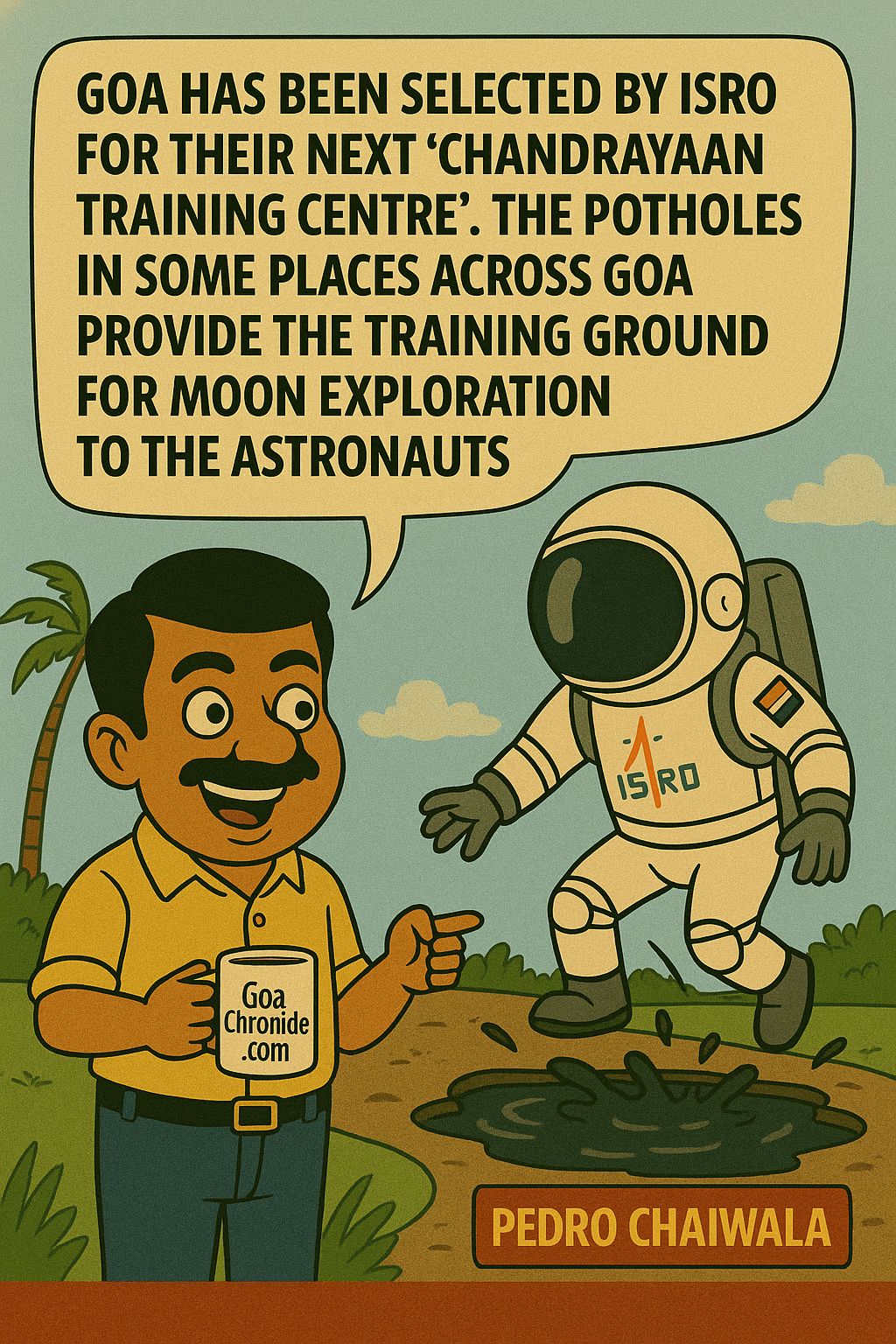The Ramayana has embellished Sanatana Dharma for times immemorial, and there is no such Hindu, who is not aware of the magnificence of this grand piece of literature, originally written by Maharishi Valmiki. For years, the Ramayana has been portrayed in different forms, like the traditional religious Ram Leela, plays, poetry, TV shows, movies, and in the form of novels and books.
Now, when Prabhu Shri Ram has become a beacon for Sanatana Dharma and its followers like never before, in order to uphold the glory of the oldest religion in the world; a new and refreshing presentation of the Ramayana has hit the literary circles.
This new creation, written by author Jawahar Pandit, is called ‘Ramayana: The Eternal Journey’.
Jawahar Pandit is a Mumbai-based author, former national and state-level sportsman, who has also worked in the fields of media, tourism, and management, both in India and abroad, and has a keen interest in philosophy and spirituality.
As per Pandit, this narrative, in essence, is three dimensional. From the beginning till the end, it showcases the metaphor of three qualities of the creation, Sat, Raj and Tam, in many ways, Ram incarnated, and Ram has showcased all the stages of Yogic science and revealed their secrets subtly in his character of human incarnation. He adds that the uniqueness of this book and sole purpose of this narrative is to explain the secrets of the Yogic science in an interesting and entertaining way.
The Eternal Journey is the first work of its kind in the area of Indian philosophy and spirituality. It throws new light on the subject of Indian spiritualism and mysticism and brings out lucidly, the hidden universal aspects of the Ramayana. The book encompasses the entire field of ethical thought of India, critically and comparatively, with appropriate references to the original sources.
It is a highly competent and thorough study of the cultural evolution of India, from the ancient to the contemporary period, both from the logical and humanistic points of view.
‘In a world filled with chaos and noise, discover the path to inner serenity and profound spiritual awakening with this book. This transformative guide offers a profound journey into the realms of self-discovery, mindfulness and enlightenment.’, stated author Jawahar Pandit.
Drawing from ancient wisdom and contemporary insights, Jawahar takes the readers on a captivating exploration of the human spirit and its connection to the universe and the creator. Through a blend of insightful teachings, introspective exercises and inspiring anecdotes, this book invites you to uncover your true self, tap into universal wisdom and forge deeper connections. ‘Ramayana: The eternal journey’ is not just a book, it is a companion for those seeking spiritual growth and deeper connection to themselves and the world around them. Let these pages be your guide as you embark on a profound journey of self-discovery, inner peace and spiritual evolution.
After the launch of his new book, Sonakshi Datta of GoaChronicle asked Jawahar Pandit, a few questions, to understand the different paradigm with which the book has been written by the author.

Jawahar Pandit presenting his book ‘True Religion of Humanity’ to different public figures
What aspects make Ramayana an ‘eternal journey’?
The Ramayana is a timeless epic in Indian literature and culture, and its enduring popularity can be attributed to several aspects that make it an ‘eternal journey’. These aspects are, firstly, the spiritual and moral lessons, as the Ramayana is not just a story, it is a source of profound spiritual and moral teachings. It explores concepts like dharma (duty), righteousness, sacrifice, and devotion. These moral and ethical lessons continue to resonate with people across generations.
Secondly, the themes in the Ramayana are universal and relatable to people from all walks of life. Love, duty, loyalty, family, and the battle between good and evil are timeless themes that transcend cultural and geographical boundaries.
Third is character Depth, as the characters in the Ramayana are multi-dimensional and relatable. Rama, Sita, Hanuman, Ravana, and others are not one-dimensional heroes or villains but have complex personalities and motivations, making them timeless and relatable to human experiences.
Another aspect is the cultural relevance the Ramayana holds. It is deeply embedded in Indian culture and has played a significant role in shaping religious beliefs, art, music, and even political thought. It continues to be relevant in various cultural and religious festivals, theatre, and art forms.
Next is epic storytelling, as the Ramayana is an epic narrative with a compelling storyline filled with adventure, intrigue, and drama. It has all the elements of a great story, making it captivating for readers and listeners across generations.
Diverse Adaptations: The adaptability of the Ramayana is a testament to its timelessness. It has been retold and reimagined in various forms such as books, television series, theatre, and films, ensuring its relevance for modern audiences.
Then we also have the historical and mythological Blend as the Ramayana skilfully weaves historical elements with mythological elements, it is a blend of real places and events, along with the supernatural, creating a narrative that appeals to both history buffs and those interested in mythology.
Another facet is the divine connection and the Ramayana’s association with divinity, particularly in Hinduism, which contributes to its timelessness. Rama is considered an avatar of Lord Vishnu, and the epic holds a sacred place in religious practices and beliefs.
Further, scholars and researchers continue to study and interpret the Ramayana from various perspectives, ensuring that it remains a subject of academic interest and discussion. The Ramayana is also a key element of the cultural identity of South Asian countries, particularly India. It helps bind diverse communities and provides a shared cultural heritage.
In conclusion, the Ramayana’s timeless appeal is a result of its rich storytelling, deep philosophical content, cultural significance, and its ability to address universal themes and human experiences. These aspects ensure that the epic remains an eternal journey for generations to come.
What makes the book a ‘must-read’, especially for today’s youth, who are distant from the habit of reading?
The Ramayana is indeed a valuable and relevant text for today’s youth, even for those who may be distant from reading habits. Here are some reasons why the Ramayana can be considered a ‘must-read’ for today’s youth. First is timeless wisdom which the Ramayana imparts, along with ethical lessons that are applicable to modern life. It addresses concepts like duty, morality, the importance of family, and the battle between good and evil, which are still relevant in contemporary society.
The epic can serve as a source of moral and ethical education, helping young readers develop a strong sense of right and wrong. The character of Lord Rama, in particular, exemplifies noble qualities and virtues. Reading the Ramayana can provide insights into the cultural and historical heritage of South Asia. It helps young readers understand the roots of various traditions, customs, and beliefs that are still prevalent today.
The Ramayana is not just a religious text; it is also a literary masterpiece with diverse perspectives and interpretations. It allows for critical thinking and encourages readers to consider different points of view.
Further, the Ramayana is a classic example of epic storytelling. Reading it can enhance one’s appreciation for literature and narrative techniques, making it a gateway to exploring other classic texts and literature. The characters in the Ramayana are well-developed and multidimensional. Readers can relate to their struggles and triumphs, and analysing their journeys can be a lesson in character development.
Understanding the Ramayana can help young people appreciate its influence on modern culture, including movies, television shows, and art. This connection between ancient mythology and contemporary culture can be intriguing for today’s youth, and reading and interpreting a complex epic like the Ramayana encourages critical thinking, analytical skills, and the ability to engage with complex ideas and narratives. The Ramayana has been adapted into various forms of media, such as animated films, graphic novels, and simplified versions for young readers. These adaptations can make the story more accessible to today’s youth who might be less inclined to read lengthy texts.
Also, for those interested in spirituality or the study of different belief systems, the Ramayana provides a window into Hinduism and can stimulate discussions about faith and philosophy.
In a world where reading habits are on the decline due to the prevalence of digital media and distractions, it’s important to highlight the value of timeless texts like the Ramayana. It can not only foster a love for reading but also impart essential life lessons and cultural awareness to today’s youth.
What are the ‘universal’ aspects of the Ramayana, which you talk about, in the book?
The Ramayana, an ancient Indian epic, contains several universal aspects that transcend cultural and geographical boundaries, making it a story with worldwide appeal.
Some of these universal aspects include morality and ethics, as the Ramayana explores the concepts of morality, ethics, and righteousness. It presents dilemmas and moral choices faced by its characters, encouraging readers to contemplate the principles of good and evil. Secondly, the epic highlights themes of love, devotion, and loyalty. The deep love between Lord Rama and Sita, the unwavering devotion of Hanuman, and the familial bonds portrayed in the story resonate with people of all backgrounds.
The Ramayana also underscores the significance of fulfilling one’s duty and responsibilities, often referred to as ‘dharma’. This theme is universally relatable as individuals in every culture grapple with their responsibilities and obligations. Further, the characters in the Ramayana face various trials and tribulations. Their struggles, endurance, and determination to overcome adversity mirror the challenges that individuals encounter in their own lives.
The fundamental conflict between the righteous Rama and the demon king Ravana represents the timeless battle between good and evil. This theme is a recurring motif in literature and mythology worldwide, and the Ramayana also places a strong emphasis on family relationships. It portrays the love between siblings (Rama and Lakshmana) and the sacrifices made for the well-being of the family, which resonates universally.
The epic explores themes of redemption and forgiveness. Characters like Vibhishana and Shabala illustrate the capacity for individuals to seek redemption and forgiveness for their past actions. Furthermore, the unwavering loyalty and friendship between Lord Rama and Hanuman serve as a universal symbol of camaraderie and trust, inspiring people to value and cherish such relationships.
Characters in the Ramayana undergo personal growth and self-discovery through their trials and experiences, reflecting the universal human journey of self-improvement and self-awareness. And despite its mythological elements, the Ramayana portrays its characters with human weaknesses and imperfections, making the story relatable to people from all walks of life.
The epic raises questions about destiny and free will, which are philosophical and universal themes that have intrigued people throughout history, and the characters in the Ramayana often make sacrifices for the greater good. The theme of selflessness and altruism is universally admired. The Ramayana’s narrative structure and storytelling techniques are masterful and universally appreciated, making it a timeless example of epic storytelling.
These universal aspects of the Ramayana contribute to its enduring appeal and relevance across cultures and generations. The epic’s themes and lessons continue to resonate with people worldwide, offering valuable insights into human nature and the human experience.
What course has the ‘cultural evolution’ of India taken according to you?
The cultural evolution of India is a complex and multifaceted process that has unfolded over thousands of years, shaped by a wide range of historical, social, religious, and political factors. While I don’t hold personal opinions, I can provide an overview of some key aspects of India’s cultural evolution.
India’s cultural evolution is characterized by diversity and pluralism. The country is home to a multitude of languages, religions, traditions, and ethnic groups. This diversity has been a defining feature of India’s culture and has led to a rich tapestry of customs, beliefs, and practices.
India has a deep-rooted history, with some of the world’s oldest known civilizations, including the Indus Valley Civilization. The cultural evolution of India can be traced back thousands of years, with the development of early Vedic and Indus Valley cultures.
India has been the birthplace of major world religions, including Hinduism, Buddhism, Jainism, and Sikhism. These religions have left a profound impact on Indian culture, shaping its philosophy, art, and way of life.
The period of British colonial rule in India had a significant influence on its culture. It brought about a fusion of Indian and western elements, leading to cultural exchanges and adaptations. India’s cultural evolution in the post-independence era has seen a blending of traditional and modern elements. The country has made significant progress in areas such as technology, industry, and education while preserving its rich cultural heritage.
India also has a vibrant tradition of arts, literature, and classical music and dance. This cultural heritage continues to be celebrated and preserved; even as contemporary art forms gain prominence. India has witnessed various social movements and changes, including the fight for independence, the women’s rights movement, and social justice movements. These have contributed to shifts in cultural norms and values.
India’s culture has been influenced by globalization, with the country being part of the global economy and cultural exchange. This has led to the incorporation of elements from other cultures into India’s own cultural tapestry. The rise of information technology and the digital age has had a profound impact on Indian culture, influencing communication, entertainment, and work habits.
Indian cuisine has a rich and diverse heritage, with regional variations that reflect local culture and ingredients. Indian food has gained international popularity, showcasing the influence of Indian culture on global gastronomy.
Additionally, Bollywood and Indian cinema have played a significant role in promoting Indian culture and storytelling worldwide. Indian films and music are appreciated across borders. Further, India’s rich cultural heritage, historical sites, and natural beauty have made it a popular destination for tourists, further exposing the world to its culture.
The cultural evolution of India is a dynamic and ongoing process, marked by its ability to adapt and absorb new influences while preserving its ancient traditions. India’s culture is a living, breathing entity that continues to shape and be shaped by the diverse communities and individuals that call the country home.
How was your experience of research for the writing of your book? How long did it take to finish the piece literary work?
Well, it was a profound experience for me and the journey began with a clear idea for a book. Extensive research is a fundamental aspect for writing such a book, but since, I was born into a very spiritually inclined family, and the kind of atmosphere and education I got in my growing years, and the passion for this subject, it was really not much of a difficult task. I did create a detailed outline for the book, mapping out chapters, and a general flow of content.
The only thought that motivated me to write this narrative and get it published, was knowing that it will make a meaningful impact on the readers, especially the youth, who have lost touch with our roots and culture in essence. It took me around one year to complete this project, and I firmly believe and acknowledge that, it was definitely the will of the divine, that this book gets published and sees the light of the day. I was just an instrument in the whole process.































